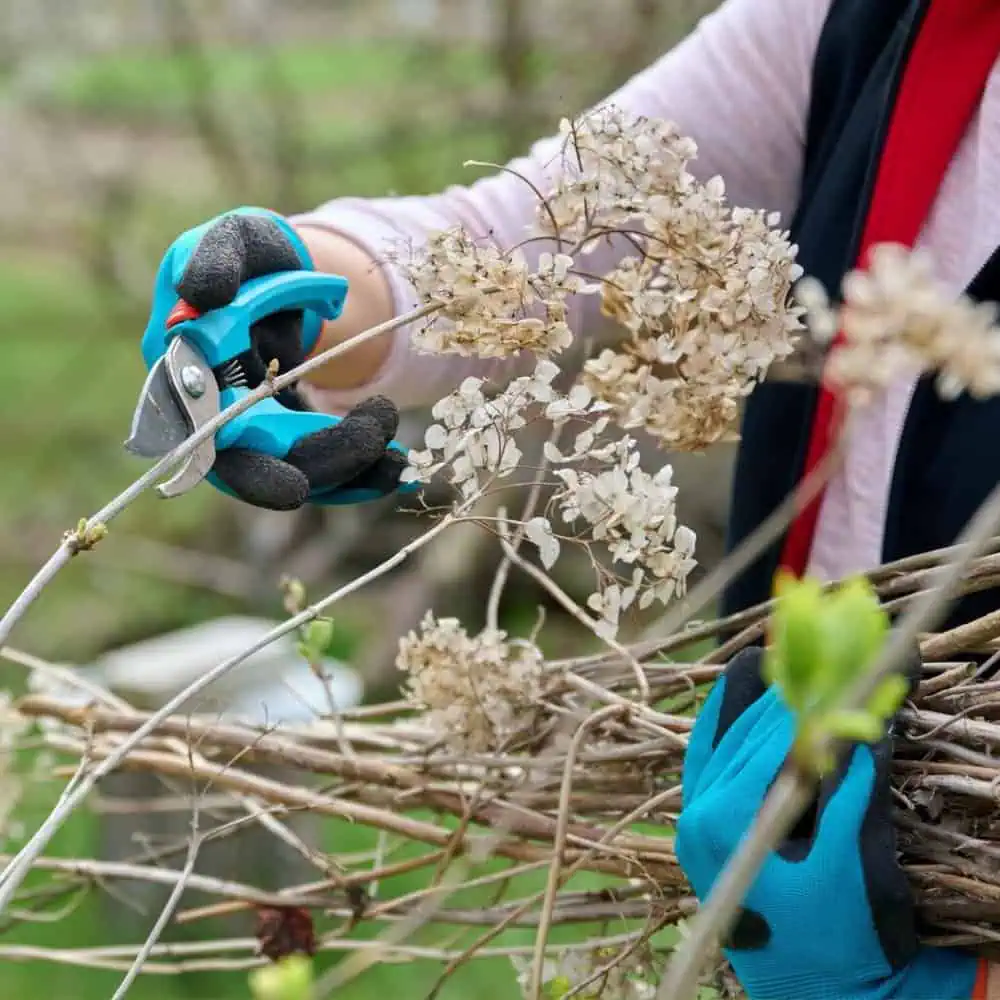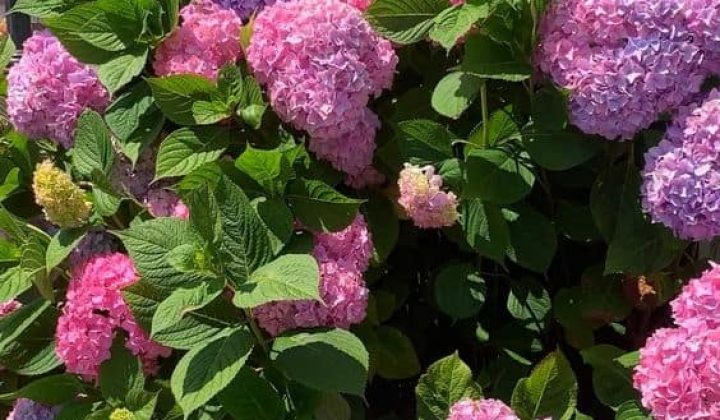Love hydrangeas?
Spring is the perfect time for care.
Follow these 5 simple tips and watch your hydrangeas produce more beautiful blooms.
Ready for a garden full of flowers?
Let’s get started!
1. Nourishing Hydrangeas

Optimal Timing: Begin feeding your plants soon after you observe sprouting in the spring season.
Fertilizer Selection:
- General-use fertilizers are beneficial.
- Formulations catered to acidophilic plants can enhance growth.
Application Instructions:
- Follow the guidance on the fertilizer packaging for dilution ratios.
- Disperse the nourishment uniformly around the plant’s base.
Watering Post-Fertilization:
- Saturate the area effectively after applying the fertilizer.
- This practice ensures proper absorption of nutrients by the soil.
2. Prune

To enhance your hydrangea’s blooming, pruning in the early phase of temperature rise is essential.
- For smooth hydrangeas like ‘Annabelle,’ trim them down to half their size.
- Always prune just above a node, leaving the plant about one foot from the ground.
Note that oakleaf and mophead hydrangeas should not be pruned this time of year.
3. Mulching Your Hydrangeas

- Ensure to add about a 2-inch layer of ground cover as hydrangea buds begin to open.
- This ground layer helps to maintain soil moisture levels, control unwanted plant growth, and keep garden areas visually appealing.
- Opt for mulching materials like shredded pine bark, pine straw, or compost for best results.
4. Transplanting Hydrangeas

When early spring warmth graces your garden, consider relocating hydrangeas that are overwhelmed by sunlight or simply too expansive for their current area.
For mature, expansive hydrangeas, trimming is advisable to facilitate a smoother transition. Trim the shrub to a size that is easier to handle before undertaking the move.
Prior to replanting, enrich the new site with soil amendments to foster robust growth. Post-transplantation, you’ll want to ensure the soil is moist to assist the hydrangeas in settling comfortably in their new home.
Post-move, consistent watering is vital to aid your hydrangeas in developing strong new roots, so be sure to water them regularly.
5. Altering Hydrangea Hues

To modify hydrangea colors, lacecap and mophead varieties respond to pH changes. Use aluminum sulfate to intensify blues or shift pinks to purples. For blues to become pink, apply lime.
- For deeper blue:
- Apply aluminum sulfate.
- Initial application: Early spring, post new growth.
- Follow-up: 1-2 months later.
- For pink blossoms:
- Incorporate lime.
Routine application ensures vibrant and healthy blooms. The transformation process requires careful attention and timely application of amendments for optimal color change.
